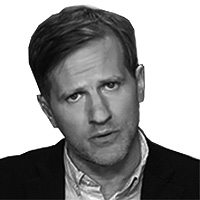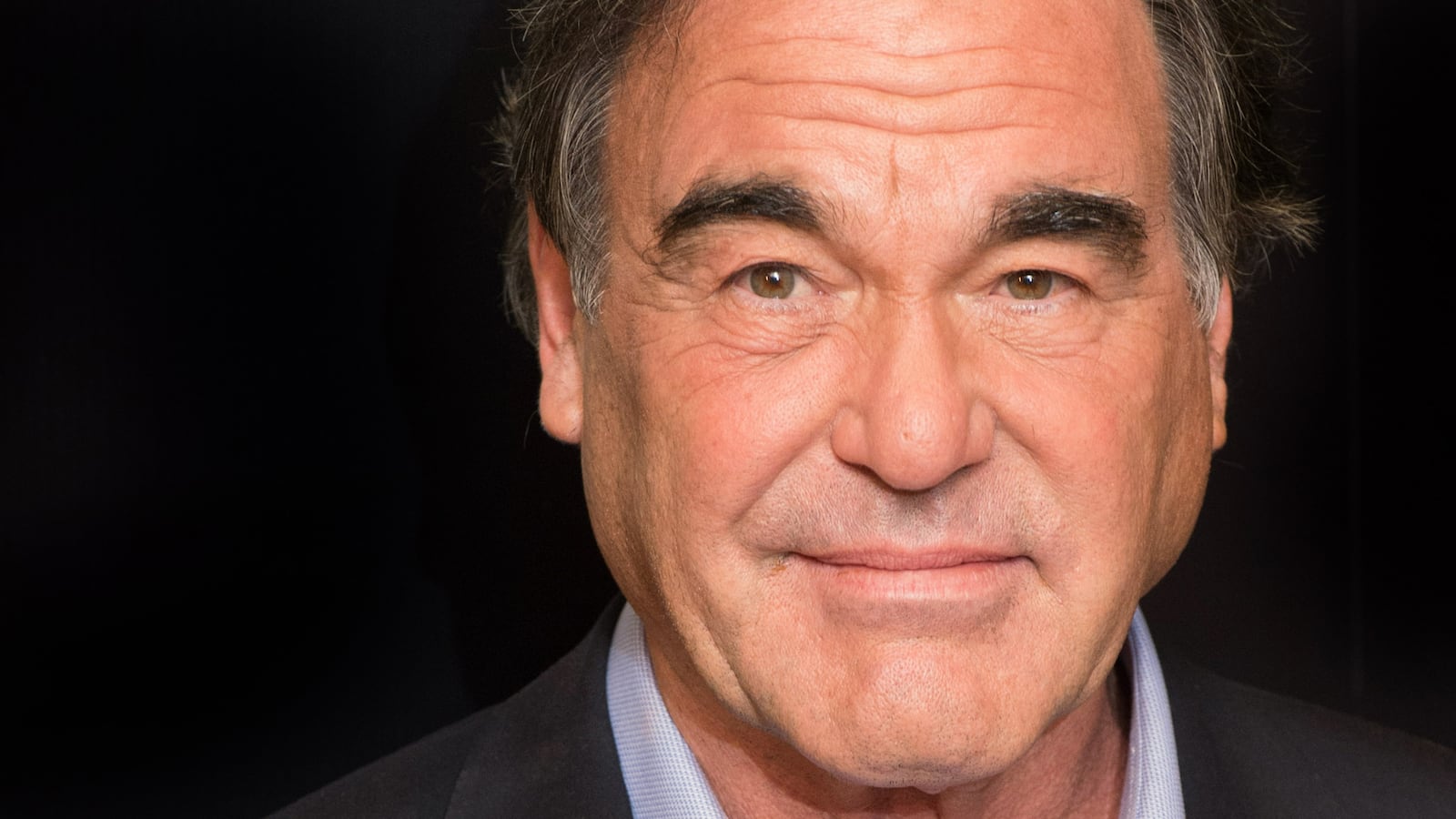During that glorious decade separating the end of the Cold War and the terrorist attacks of 9/11, the junk history machine idled, periodically revved up by provocateurs on the right and left, but was mostly quieted by the stunning collapse of communism. The junk historian, who approaches the past with a purpose—working backward from a conclusion, using a smokescreen of dubious quotes and sources, with hopes of influencing future policy—sat impatiently while the United States ambled through the “end of history.”

But the Bush and Obama years provided ample fodder for the revisionist, those interested in explaining the long arc of American imperialism or, in the case of cranks like Glenn Beck, the ever-present threat of Marxist subversion. The latest example of swivel-eyed, ideological history, this time from the left, is a collaboration between American University professor Peter Kuznick and filmmaker Oliver Stone, whose new book The Untold History of the United States, and attendant 10-part companion documentary series on Showtime, is a marvel of historical illiteracy.
The Untold History of the United States is a doorstop of a book, one thick with villains—and flecked with the occasional “forgotten” hero—all assembled to prove that the 20th century was a one long spasm of American treachery. The authors are not offering, as Politico described it, “a liberal interpretation” of American history but a radical one, with particular contempt reserved for liberal anti-communists and mainstream Democrats.
So far, Stone and Kuznick have been treated with seriousness by the mainstream media. The Christian Science Monitor promises the pair would provide “newly discovered facts.” Washington Post film critic Ann Hornaday assures readers that “in hewing faithfully to the facts—albeit within a dramatically different framework than most Americans are accustomed to—Stone can’t be accused of the kind of speculation” that dogged his bonkers conspiracy film JFK. And The Los Angeles Times wants you to know that Untold History has “not only been repeatedly fact-checked—including a layer of confirmation by Showtime—it’s co-written with an American University historian.” It is reassuring that the contested “facts” of the Cold War have been, once and for all, adjudicated by a second-tier cable film channel.
Let’s start with the book’s misleading title. This isn’t in any sense an “untold story”; the authors mine only previously published accounts, having done no archival research. Indeed, this “untold” story has been told ad nauseam by other radical and revisionist historians, most of whom are cited in the book’s footnotes. Their real complaint is that, for the most part, the revisionist narrative has failed to become the dominant narrative. Nor do they attempt a broad survey of American history, instead focusing almost exclusively on United States foreign policy in the 20th century (though there are predictable chapters on the administrations of George W. Bush and Barack Obama).
Here, for example, is an incomplete list of Oliver Stone and Peter Kuznick’s historical revisions, mostly concerned—as much of the book is—with the Cold War: If the United States hadn’t been resistant to assisting the Soviet Union in the late 1930s, then in throes of the Great Terror, Stalin would never have allied with Hitler’s Germany. The Nazi-Soviet pact was an attempt at buying time, because “Stalin understood that the Soviet Union’s turn was coming soon.” The brutal details of the alliance—Soviets and Nazi military cooperation, the violent bifurcation of Poland, the Soviet invasions of Finland, Latvia, Lithuania, and Estonia—are ignored (Stalin, the authors say, “asserted control” over the Baltics and was guilty of “heavy-handed treatment of Eastern Europe,” a rather gentle way of describing an almost half-century of brutal occupation).
Did you know that the Marshall Plan to rebuild Europe after World War II too was an anti-Soviet provocation, which “exacerbated Soviet fears of both a rearmed Germany and capitalist encirclement”? But the Soviets surely blockaded Berlin, right? No, they “attempted nothing of the sort.” In fact, the 1961 Berlin crisis was also precipitated by the United States, but “the Berlin Wall defused the immediate danger” of war. North Korea invaded the South with Moscow’s blessing, but “believing that a South Korean attack on the North was coming, Stalin decided to act first.” Why did the Soviet Union invade Afghanistan in 1979? Jimmy Carter’s national security adviser Zbigniew Brzezinski, an “obsessed anti-communist” who, the authors note darkly, was a member of the Bilderberg Group and Trilateral Commission, “set the trap for the Russians in Afghanistan.”

One must forgive those American apologists for the Soviet Union, according to Stone and Kuznick, because of reports that Stalin was guiding the “greatest human experiment undertaken”—many from Stalinist New York Times correspondent Walter Duranty—with economic results that “seemed to justify that description.” Exhausting their supply of weasel words, the authors write that “the Soviet economy appeared to be booming”, “Soviet society seemed to be undergoing an incredible transformation,” and there were “indications of Soviet success.”
Because Stalin’s crimes are undeniable, they offer a few scattered words about Soviet barbarism, though without providing specifics and only to establish that Moscow’s policies were reactive; the logical blowback from American bullying. So a brief paragraph on Stalinist mass killing starts with a stunning qualification: “Encircled by hostile capitalist nations and fearing a new war, Josef Stalin embarked upon a policy of breakneck industrialization that would claim many victims.” Vice President Henry Wallace, we are told, “remarked, somewhat overgenerously, that ‘Stalin was a fine man who wanted to do the right thing.” One must admit, the authors possess a remarkable talent for understatement.
Surveying the meaning of the Cold War, which “brought a kind of structure and stability” to the world, Stone and Kuznick argue that the United States must shoulder almost all of the guilt, offer the stunning conclusion that “the Soviet Union had more often than not exercised restraint upon their allies [sic]” (It’s perhaps worth mentioning here that Soviet occupation forces in Germany committed as many as two million rapes between 1945-46).
*****
One would need a volume thicker than The Untold History, which heaves at 700-plus pages, to catalog its casual assault on source material. It would be impossibly time-consuming to check all of the authors' claims—there are more than 100 pages of notes—but a random auditing of the book’s source material is telling.
For example, when discussing Reagan-era tensions with Moscow, Stone and Kuznick bizarrely claim that the CIA “knew that the Soviets, for all of their faults, actually discouraged terrorism.” This is nonsense of the highest order. The authors rely on a hopelessly outdated book (the footnote points to Veil, Bob Woodward’s controversial 1987 history of Bill Casey’s CIA), but even their handling of this citation is inaccurate. According to Woodward, the CIA found that “there were some cases in which [the Soviets] had actually discouraged terrorism,” when it suited their strategic interests. A few sentences later he clarifies that Moscow provided assistance to terror networks “particularly through their satellites East Germany and Bulgaria, [which] also clearly contributed, at least indirectly, to more terrorism because these countries aided some extreme groups such as the PLO.”
This is far too soft, but Woodward can be forgiven for erring on the side of caution. He was, after all, writing before the collapse of communism and the opening of the archives of various intelligence agencies. As Cambridge University historian Christopher Andrew wrote in his book The Sword and the Shield, using archival material made available after the Soviet Union’s collapse, “[Soviet Premier Yuri] Andropov became increasingly willing, both as KGB chairman and as Brezhnev’s successor from 1982 to 1984, to use, or connive in the use of, terrorism against United States and NATO targets.”
Other quotes are simply pruned to suit the authors’ thesis. For example, Harry Truman, one of the The Untold History’s great villains, is accused of “fanning the flames of mistrust” between Moscow and Washington in the summer of 1941. They quote the then-senator saying, not long after Nazi Germany invaded the Soviet Union, that “If we see that Germany is winning we ought to help Russia, and if Russia is winning we ought to help Germany, and that way let them kill as many as possible.”
But the full quote offers a rather important caveat:
“If we see that Germany is winning we ought to help Russia, and if Russia is winning we ought to help Germany, and that way let them kill as many as possible, although I don’t want to see Hitler victorious under any circumstances. Neither of them thinks anything of their pledged word.” (Emphasis added.)
Kuznick and Stone replace a comma with a full stop, excising a hugely important qualification—one meant to underscore Truman’s opposition to both genocidal dictatorships.
When Stone and Kuznick aren’t manipulating reputable sources, they’re enlisting untrustworthy ones. A passage on the Gehlen Organization—a group of former Nazis recruited to assist Allied intelligence after World War II—cites the assessment of “a retired CIA official” who judged the intelligence provided by the group to be “hyped up Russian boogeyman junk” (whether it was or not, of course, is irrelevant to the larger moral issue of the United States government employing ex-Nazis). But look closely and you’ll find that the “former official” is one Victor Marchetti, an anti-Semitic conspiracy theorist whose work can be read in various Holocaust denial journals (he also claims that “We have, indeed, been contacted—perhaps even visited—by extraterrestrial beings,” though the government has covered up the interactions).
There are many small errors too—largely inconsequential but indicative of a lack of academic rigor. Truman’s Secretary of Defense James Forrestal suffered from severe mental illness, ultimately committing suicide in 1949, but he wasn’t “tormented by his own anti-communist paranoia,” nor was he once found “in the street wearing his pajamas and shouting ‘the Russians are coming,’” an apocryphal story, long since debunked. The Chernobyl accident did not “leave 8,000 people” dead, President George H.W. Bush didn’t call Col. Oliver North “his hero.” And so on.
Stone appears intent on being taken seriously and wiping away his much-deserved reputation as a conspiracy theorist, so it’s unsurprising that President Kennedy’s assassination is little discussed: “We may never know who was responsible or what the motive was.” Readers might recall Stone’s Academy Award-winning film JFK, which informed millions of Americans that the president was murdered in a conspiracy involving Vice President Lyndon Johnson. Still, he can’t quite suppress the conspiratorial impulse. There are hints at dark forces throughout the book: business interests controlled by the Bush family that were (supposedly) linked to Nazi Germany, a dissenting officer in the CIA found murdered after disagreeing with a cabal of powerful neoconservatives, suggestions that CIA director Allen Dulles was a Nazi sympathizer.
There are likely readers who will find this book revelatory, though mostly those who, like Stone and Kuznick, came to a conclusion first and only later sought out supporting evidence. But others should be warned that this isn’t a book of history, but of ideological faith. There are indeed many dark epochs in American history, but there are plenty of well-rendered and honestly researched books that address these without sliding into moral equivalence between the policies of the psychotically brutal Soviet Union and the frequently flawed policy of the United States.
Stone and Kuznick are welcome to blast the United States, but they aren’t entitled to their own facts.






